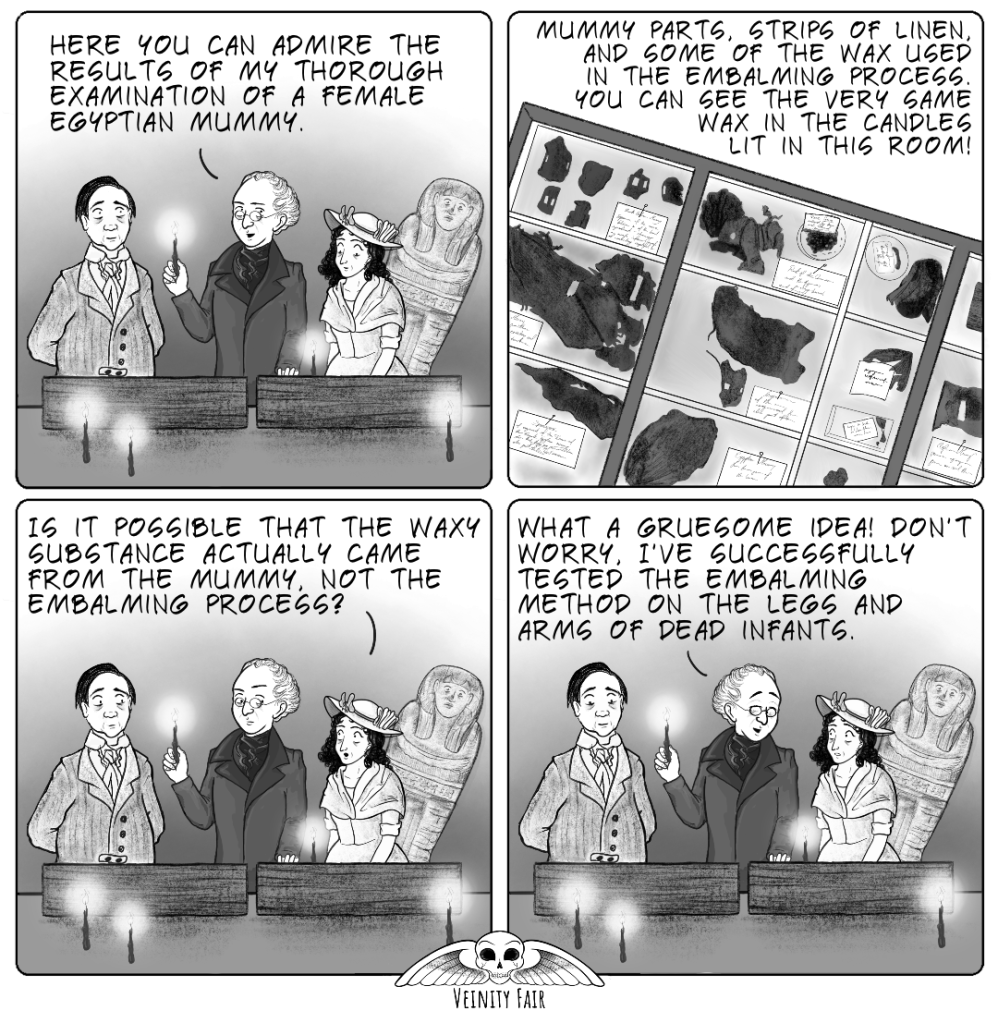
Have you ever unknowingly made candles out of a dead body? ![]() This might seem impossible, but it’s exactly what physician Augustus Bozzi Granville did. In 1821, in the midst of Victorian Egyptomania, he had a chance to unwrap, dissect, and thoroughly examine an ancient mummy. During the process, he discovered a wax-like substance surrounding the mummy, which he thought to be a mix of beeswax and bitumen used by Egyptian embalmers. In reality, he came across adipocere (commonly known as corpse wax), a product of saponification of fatty tissues.
This might seem impossible, but it’s exactly what physician Augustus Bozzi Granville did. In 1821, in the midst of Victorian Egyptomania, he had a chance to unwrap, dissect, and thoroughly examine an ancient mummy. During the process, he discovered a wax-like substance surrounding the mummy, which he thought to be a mix of beeswax and bitumen used by Egyptian embalmers. In reality, he came across adipocere (commonly known as corpse wax), a product of saponification of fatty tissues. ![]()
In his autobiography, Granville sums up his discovery:
“I claim in this laborious investigation to have demonstrated the fact of wax having been the ingredient which was successfully employed, not only to preserve the body from putrefaction, but also to keep the membranes as well as ligaments in their supple condition, so that when the wax was discharged from them by the process of boiling in water, the soft parts came out with their natural structure, and in less than twenty-four hours underwent decomposition and putrefaction.” ![]()
He was so sure of his discovery, that he used the very same ancient “wax” to prepare a set of small candles to beautifully illuminate his lecture on the mummy at the Royal Institution.![]()
![]()
To further support his claims regarding the mummification method, Granville experimented with preserving body parts of stillborn children with the use of wax “according to the Egyptian method”. All of his specimens can still be seen at the British Museum.
